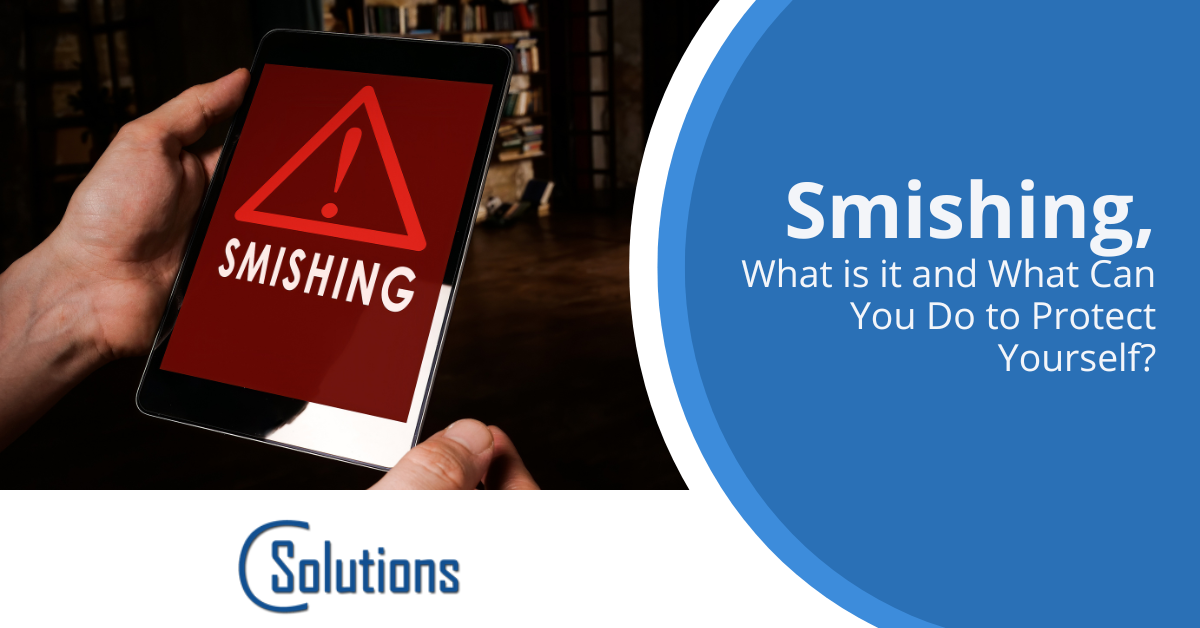Smishing, What is it and What Can You Do to Protect Yourself?

The utilization of mobile phones is rapidly expanding, and these devices have been the most phishers targets. While mobile devices have access to various communication channels (email, social media, etc.), text messages offer substantial benefits to phishers.
Every day, billions of texts are sent, and threat actors actively utilize SMS phishing, also known as Smishing, to target users’ privacy and their money. Specifically, mobile and email message volumes continue to ascend internationally, with mobile messaging traffic showing no signs of decreasing in 2021. Approximately, 44% of Americans reported a sharp increase in scam text messages during the pandemic.
Smishing is a hack that uses false SMS messages to trick consumers into disclosing personal information. Like other phishing attempts, Smishing is deceiving someone into opening a link that downloads malware onto their mobile device or provides the scammer’s some vital personal information.
Smishing is especially harmful to individuals who don’t understand fundamental cybersecurity because SMS messages are formulated in such a way that they look genuine.
Various Types Of Smishing
Smishing started as an SMS phishing assault, and numerous smishing attacks are being tried. Here are some of the most prevalent attacks to be aware of.
Smishing Text
The Smishers could do a variety of things with a text message. Impersonating a bank agent and stealing your personal information are examples of this. They may send you a text message with the link to urge you to go to your bank’s website and verify a recent questionable charge.
Sometimes, they may ask you to phone their customer care number contained in a text message to address a current questionable charge or a compromised account. This format could make one release some vital information during the call, or one might be tempted to upgrade to get a prize giveaway.
Smishing in Instant Messaging
Smishing officially does not include phishing via instant messaging programs like Facebook Messenger or WhatsApp, although it is closely connected. Instead, the Smisher capitalizes on people’s comfort with receiving and responding to messages from strangers via inauthentic social media platforms by pretending to be who they are not.
The purpose of the attack, like a genuine phishing attempt, is for you to provide the threat actor with personal information such as passwords or credit card details. These attackers are willing to pay a high price for your sensitive information. These deals typically feature a clickable link.
Order Acceptance
Smishing communications may include confirming a bogus order and the link to change or cancel a particular transaction. When the receiver of such a message clicks on a link, they are taken to the fake website that harvests their login information.
What To Do To Safeguard Your Organization Against Smishing Attack
Make use of access control.
Not everyone in the company requires access to all files. Only those who need to use databases, websites, and networks should have access to them. This decreases the possibility of smishing attacks. Instruct staff to compress files and deliver them over email rather than other methods because it is a safer alternative.
Utilize security awareness
To improve awareness of the dangers of clicking links and downloading files in text messages, use security awareness programs and models. To keep training dynamic and engaging, add gamification and micro- and nano-learning modules.
Determine how well-versed your personnel are in cybersecurity.
Before you begin, it can be highly beneficial to evaluate your employees’ cybersecurity knowledge by running a short survey with particular questions that assess their level of alertness to various fraud efforts. You may solve this by creating a free survey using a tool like JotForm. Knowing your employees’ expertise on the subject will aid in developing your cyber awareness training program.
Remind your employees always
Remind employees not to respond to links within a text message from unknown senders or phone numbers. Employees should ban and remove SMS messages from their smartphones.
Keep everyone up to date on potential smishing attacks.
If you become aware that your organization is being used in a smishing or phishing scam, notify your clients and customers as soon as possible to avoid unintended data breaches or other corporate damage. Reiterate your company’s policies on requesting account information and acceptable communication techniques.
Have clear BYOD policies and restrictions.
If employees are permitted to use their smartphones for business purposes, implement BYOD policy, “Bring Your Own Device “ that establishes clear expectations and standards for everything from app usage to cyber threat detection.
Get Help with Mobile Security
While cybercriminals are out there, your organization may take precautions to keep safe. It’s unlikely that opening a text message will expose your company to a virus or endanger your data; avoid clicking on any links. Be cautious of any unusual or unexpected messages to prevent any form of email phishing or Smishing.
Contact us at C Solutions to discover more about protecting your company’s mobile devices from Smishing.
